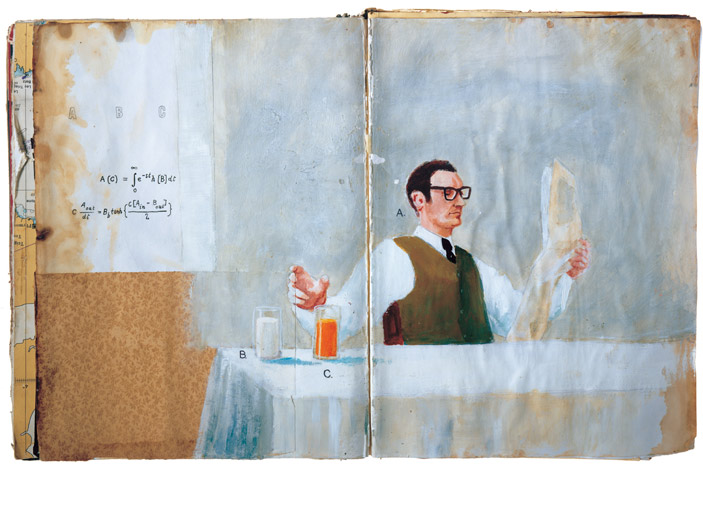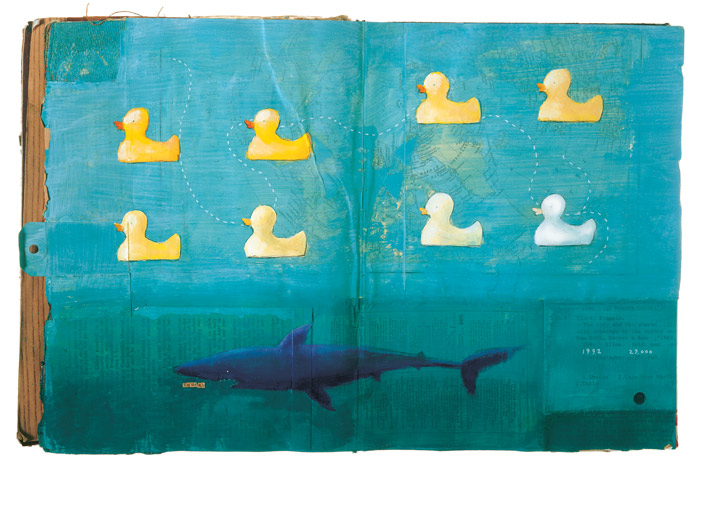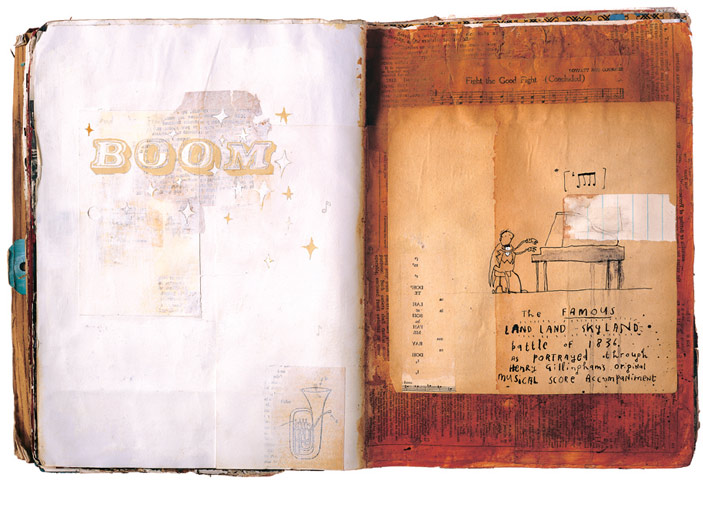
Category: Authors
Beautiful Sketchbook
For 36 weeks in 04, Oliver Jeffers and three other artists sent a sketchbook back and forth across the Atlantic between them, each artist responding to the spread that proceeded the one before. When it was finished, the book had traveled over 60,000 miles. WOW, what a great idea with amazing results is all I can say.





Beautiful Dr. Seuss
Happy Birthday Dr. Seuss!

Born Theodor Seuss Geisel in Springfield, Massachusetts (1904). He went to Dartmouth College, where he was editor in chief of his college’s humor magazine. One night, he was caught drinking gin in his room with a group of friends, which was not only against the school rules but also illegal under Prohibition. He wasn’t kicked out, but he had to resign from all his extra-curricular activities, including the humor magazine. Geisel couldn’t quite accept this turn of events, so he continued contributing to the magazine but used a pseudonym: “Seuss.” It was his middle name and his mother’s maiden name.
In the fall of 1936 he wrote And to Think That I Saw It on Mulberry Street (1937). His manuscript was rejected more than 20 times; editors disliked the fantasy, the exuberant language, and the lack of clear morals. One day, after receiving yet another rejection, he finally decided to give up and burn his manuscript. He was thinking about this as he walked down Madison Avenue in New York, when he bumped into an old classmate from Dartmouth, who had recently become a children’s book editor for Vanguard Press. After hearing his story, the classmate took Geisel back to his office and introduced him to some executives, and it wasn’t long before he had a book deal. He said later: “If I had been walking down the other side of Madison Avenue, I’d be in the dry-cleaning business today.” For the next 20 years, Geisel continued to publish children’s books and work on cartoons and ad campaigns. And he drew posters for the war effort during World War II.
In 1954, Life magazine published an article about the low rates of literacy among elementary-aged children across the nation. The writer concluded that most primer books, of the Dick and Jane variety, were just too boring to engage and teach kids. The editor at the education division of Houghton Mifflin gave Seuss a list of about 250 words and challenged him to write a book that a first-grader would love, using only those words. Seuss agreed, expecting it would be a quick project, but he found it extremely difficult even to get started. Not only did he have a very small list to work from, but he also was accustomed to making up nonsense words, which he couldn’t do. He kept coming up with ideas but was unable to express them with such a limited vocabulary. Finally, he decided that he would read through the list once again, and if he could find two words that rhymed, that would be the subject of the book. He saw “cat” and “hat,” and he had a title. A year and a half later, he had completed the manuscript using 236 words. When The Cat in the Hat (1957) was published, it was an unprecedented commercial and critical success, and made Seuss a household name. And the rest, as they say, is history.
– Writer’s Alamanac
He said: “I like nonsense; it wakes up the brain cells. Fantasy is a necessary ingredient in living; it’s a way of looking at life through the wrong end of a telescope.”